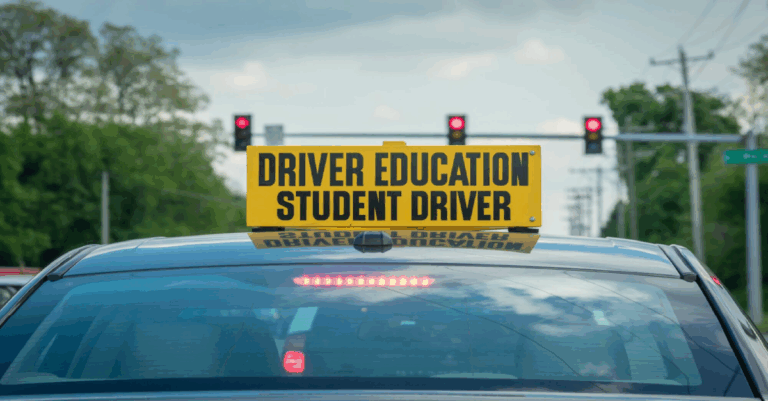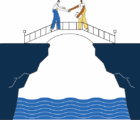
Moving from a car year to continuous observation of driving behaviors and incorporating live-action accident response set the stage for the session, “Improving Telematics with Driver Education,” presented by Robert Zolla FCAS, MAAA; Sam Chiu, B.S., MBA, Psy.D; and Bill Costa, FCAS, with Nickolas A. Alvarado FCAS, CSPA, MAAA, serving as moderator at the 2025 RPM Seminar. The following is a summary of the session as presented by this panel.

Turning all this data into personalized, instructional design for creating safer driving experiences for every driver is the goal. Along the way, rewarding better driving with more accurate and better ratemaking just makes sense.
Traditional insurance windows on the driving world are opaque. They aggregate multiple trips across days and weeks of actual driving experience to single units of observed risk data across time rolled up to a car year level of analysis. Even with a full policy period completion, typically six months or 12, we simply count claims — zero mostly, then one, two, etc. Some policies end early. Some vehicles are taken off the road. Frequency and severity pile up across a time-based contract exposure period.
From that, we make informed guesses, but I prefer the term predictions.
In order to attempt to predict what might happen in the next future period, we make assumptions. We make assumptions on the amount of driving since time is not the only consideration. We make assumptions on where, when, and who will be driving. We absolutely make assumptions on “how” we anticipate the policyholder to go about their driving. We have parameterized a bit with prior information that drivers with more experience may avoid situations and accidents due to their road awareness (age is not a perfect metric, especially if not allowable in rating, or as young drivers delay getting their licenses, but generally, we expect due to driving experience, those with more experience have higher awareness of what safe driving means in the context of the driving situations they encounter).
We create an economic behavioral conditioning — better driving, better price. But, with so little to go on, we often feel we are driving the ratemaking process with our eyes wide shut.
What if we could open our eyes by seeing through the eyes of our drivers using modern data from a digital lens?
This session posed and answered these questions.
The forward momentum of telematics has evolved to a spectrum of data points and streams that can re-create the rhythm and motion of any vehicle in any circumstance. Sometimes including full-action video.
When a time-blocked contract is now seen in the context of driving situations across every driving moment, we can potentially observe the “why” of every accident. Those insights can match rate to risk with massive new segmentation. In addition, we can turn our data-driven insights about adverse events into likely avoidable scenarios that drivers can learn to recognize and learn to react to. This will influence the likelihood of future claims in a downward trajectory, which is good for everyone.
Better driving habits could be instilled with education using driving simulators (like a pilot in a flight simulator) to turn “why did an accident occur,” into “why not?” Teaching driver awareness for understandable risks will help prevent accidents. By teaching drivers how to anticipate “why” they may soon be in a predicament, they can learn to avoid them.
It is just so much easier to stay out of trouble when driving, than to get out of trouble after it occurs.
Driving too fast for conditions, being unable to see clearly at night, using bright lights, dealing with congestion, weather, narrow roads, construction, etc. Following too closely. Misjudging distances and speed. Failure to obey rules of the road, signs, lights, and instructions. Or simply being distracted while in charge of operating thousands of pounds of moving machinery. These are just a sample of the ways drivers get themselves into dangerous situations
The key to creating a learning path is to think like a psychologist. Is there a treatable behavior that can be observed and changed? (Such as all of those mentioned in the paragraph above.) We learned that we could teach a skill set — defensive driving — that can keep you safe by learning how to stay out of a risky situation that is both recognizable and readily anticipated.
Using modern data streams of connected people with connected cars, telemetry information, whether streaming or in observational buckets tallied by time, distance, road base or trip segments gives us new data and insights to measure driver behaviors while driving. The obvious ratemaking, underwriting and pricing actions swirl in our imaginations. The speakers gave concrete examples to consider adopting for ourselves, our families, customers, and prospects.
Most importantly, we learned that drivers could learn how to learn. In a fantastic revolution based on this realization, automotive engineers and safety software programmers are fusing technology across multiple onboard sensing systems that can now enact sense-and-respond maneuvers automatically and autonomously. When the car keeps you out of trouble, that creates a new segmentation on accident avoidance, but new car features drift into the fleet of vehicles in operation in a decades-slow penetration process. All insurers can do is track those specifically equipped different vehicles according to their own desired vehicle-personalized rate accuracy and underwriting appetite.
The best drivers set the example, and instructional design with realistic driver-eyes in a digital twin driving world can let everyone else be like them or at least make fewer mistakes. Training is not just for human drivers, so the vehicle sense-and-respond systems are equally trainable with these same gathered knowledge and simulations. And that goes for every contraption conveying people — bikes, boats, motorcycles, etc. Add in every commercial vehicle and conveyance, too.
Telematics with evolving levels of fidelity in signal can see the behaviors in context to driving situations, and education and incentives can nudge drivers (and machines) along a path of continuous improvement. These are given strong positive reinforcement with rewards, recognitions, objective functions and driver/vehicle ratings that help drivers incorporate the feedback into habit.
Matching the right situational awareness to the right roadway situations enables drivers to learn a risk and safety mindset to avoid trouble or at least mitigate the effects where possible when trouble is unavoidable. Identification of what needs to change, communication targeting that improvement and maintenance of changes in behavior is the path to progress.
Combining safer vehicles with safer drivers has an outsized effect on making safer roads and lower rates. That’s something worth learning.
Martin Ellingsworth is the president at Salt Creek Analytics. And a big thank you to Rachel Hunter for peer editing.













